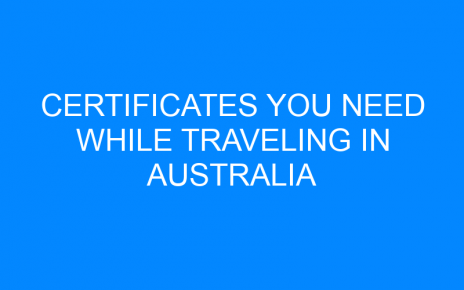You are entitled to bring with you, without paying taxes or the like, personal effects and family heirlooms that you have owned for at least 12 months before arriving in Australia. Before packing an item, consider whether it is cheaper to take it with you or to buy a new one when you arrive in Australia. Among the permitted objects are:
- Furniture
- Household items and tableware
- Silverware and cutlery
- Tablecloths and other linens
- Clothes but not furs
- Books
- Jewelry
- Musical instruments
- Antiques
- Collections of stamps and coins
- Paintings and sculptures
- Sports equipment
- Electronic devices
Don’t forget the receipts! Whenever possible, you should keep receipts for all of these assets in a way that proves that they are only actually your personal belongings and solely for your personal use.
DECLARE YOUR GOODS:
Table of Contents
If you arrive in Australia by plane, you will receive an Incoming Passenger Card. If you are transporting food, pet products or the like, you must declare it by ticking the YES box on the questionnaire.
Remember that your luggage can be inspected with x-rays or with molecular dogs even at the exit from the airport terminal, so be prepared.
If you declare goods that are not allowed to be imported into the country, don’t worry, they will not be a reason for penalization. However, if you break the law, you could be fined as low as $ 220 for failing to stay in quarantine, or you could be fined more than $ 66,000, reported to the authorities, and spent 10 years in prison!
IMPORTING VALUABLE ITEMS INTO AUSTRALIA:
If the idea of moving to Australia has been on your mind for a while, and you start thinking about moving permanently, you will also need to think about how to bring valuables you already have with you to Australia, and above all how behave legally. Well, let’s try to shed some light on it.
If you have any purchase receipts or ownership certificates, you will do well to carry them with you.
The following items are permitted to be transported:
- watches
- jewelry (wedding rings, necklaces, earrings, etc.)
- antiques
- artwork
- money
All valuables should be evaluated by experts in your home country before moving to Australia.Do not forget to insure items against loss and damage in transit.
You will need to apply for a special permit to import works of art, archaeological finds and objects of particular value into Australia. I would recommend that you consult the Australian Customs and Border Protection website for more accurate and detailed information.
There is no particular limit on luxury goods that can be imported into Australia, however, goods worth more than AU $ 10,000 must be declared.
Exclusions
Below I will list the items that are not considered domestic goods by the Australian Custom and Border Protection Service and therefore may be subject to customs taxes or the Goods & Services Tax (GST).
- Motor vehicles and parts of motor vehicles
- Caravans, campers, boats and trailers
- Aircraft
- Machinery, plants and other equipment
- Real fur garments
- Furniture and electronics object
- While as far as furnishing accessories are concerned, it might be an excellent idea to take them with you, for electronic items it is a bit different, because they may not work once you arrive in Australia.
The electric current that powers small appliances such as lamps, radios and televisions is 240 Volts at 50 Hz in Australia. If your devices are not compatible with this voltage, leave them at home. The converters could damage them, thus decreasing their normal life span.
Your DVDs may not play in Australian players unless they are Region-4 or region-free discs. Check their compatibility before putting them in the boxes to be shipped.
Televisions. In Australia, the PAL television system is used. If you bought your TV in an NSC region, there may be problems with returning it if you decide to take it with you. Check if it is compatible with PAL or suitable for conversion before leaving your home country. Otherwise, you could try to sell it or give it away, and you wouldn’t waste money transporting it unnecessarily to Australia. for visa related issues consult here
IMPORT MOTOR VEHICLES:
Interesting information for importing motor vehicles into Australia is available on the Australian Customs and Border Protection website. The expected costs of transporting vehicles from your home country include all types of taxes, the payment of which is necessary. You may be required to pay the Luxury Car tax (LCT) if your vehicle has a market value of more than $ 57,466 and is designed to carry a load of less than two tons and less than nine passengers.
IMPORT A BOAT:
The amount of costs involved in importing a yacht to Australia depends on a number of different factors, including the value and age of the boat, and the number of modifications. See the Customs and Border Protection website for more information.



